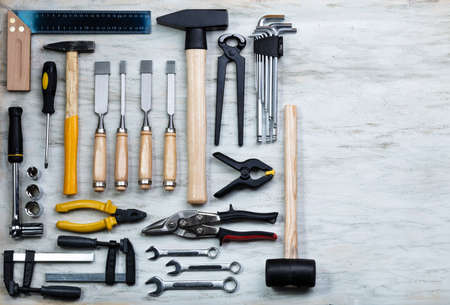1. Understanding Your Smart Home Goals
Before diving into the world of smart home technology, its important to get clear on what you actually want out of your system. Choosing between a custom integration or an off-the-shelf setup starts with understanding your personal goals, lifestyle needs, and long-term expectations. Heres a breakdown of key factors to help guide your decision:
Budget Considerations
One of the first questions to ask yourself is: how much are you willing to spend? Custom integrations typically come with a higher upfront cost due to professional installation, advanced hardware, and personalized programming. Off-the-shelf solutions are more budget-friendly but may have limitations in scalability and compatibility.
| Factor | Custom Integration | Off-the-Shelf |
|---|---|---|
| Initial Cost | High | Low to Moderate |
| Installation | Professional Required | DIY or Simple Setup |
| Flexibility & Scalability | Highly Scalable & Tailored | Limited by Brand Ecosystem |
Lifestyle Fit
Your daily routine plays a big role in what kind of smart home solution makes sense for you. If youre tech-savvy and enjoy experimenting, off-the-shelf devices might be enough. But if you want everything automated and seamless—like lights that adjust when you enter a room or shades that close at sunset—custom integration can provide that level of sophistication.
Home Layout & Structure
The size and design of your home matter too. Multi-story homes, older buildings, or larger properties often benefit from custom systems that ensure consistent performance across all areas. On the other hand, smaller apartments or open-concept homes may work perfectly with plug-and-play devices.
Long-Term Expectations
Think about where you see your smart home in five years. Do you plan to expand it over time? Are you looking for seamless updates and future-proofing? Custom integrations are generally built with longevity in mind, while off-the-shelf setups may require more frequent upgrades or replacements as technology evolves.
Quick Tip:
If youre planning a renovation or building a new home, its the perfect time to consider custom integration since wiring and infrastructure can be planned in advance. For existing homes without major changes, off-the-shelf might be a quicker way to get started.
The better you understand your needs today and in the future, the easier it will be to choose the right path for your smart home journey.
2. What is Custom Integration?
Custom integration is all about creating a smart home system that’s uniquely tailored to your lifestyle, needs, and space. Unlike off-the-shelf solutions that you can buy and install yourself, custom integration involves working with professional installers who design and implement a personalized setup just for you.
Working with Professional Installers
One of the biggest advantages of custom integration is having experts handle everything from start to finish. These professionals assess your home, understand your goals, and recommend the right combination of devices and systems. They also take care of wiring, programming, and troubleshooting, so you don’t have to worry about technical details.
Personalized Automation
A custom smart home setup means every feature works exactly how you want it. Want your lights to dim automatically when a movie starts? Or your thermostat to adjust based on the time of day and weather? With personalized automation, you can create routines that match your daily habits perfectly.
Examples of Personalized Automation
| Scenario | Custom Automation Feature |
|---|---|
| Morning Routine | Coffee maker turns on, blinds open, and news plays on smart speakers at 7 AM |
| Leaving Home | Lights turn off, doors lock, thermostat adjusts to energy-saving mode |
| Movie Night | Dimming lights, closing shades, turning on TV and sound system with one command |
System Scalability and Future-Proofing
A major benefit of custom integration is scalability. As your needs grow or technology evolves, your system can grow with you. Whether youre adding more rooms or new devices, a professionally integrated system is designed to expand easily without starting over from scratch.
Custom vs Off-the-Shelf: Quick Comparison
| Feature | Custom Integration | Off-the-Shelf System |
|---|---|---|
| Installation | Handled by professionals | User installs themselves |
| User Experience | Tailored to individual preferences | Standard features for general use |
| Scalability | Easily scalable with expert support | Limited by product ecosystem |
| Troubleshooting & Support | Ongoing professional support | User must troubleshoot or contact manufacturer support |
| Aesthetic Integration | Sleek, hidden wiring and equipment options available | Cables and devices may be visible depending on setup |
If youre looking for a seamless experience where every device works in harmony and suits your lifestyle down to the smallest detail, custom integration might be the right path for you.

3. The Off-the-Shelf Smart Home Experience
Off-the-shelf smart home devices are widely available and designed for easy setup and use, making them a popular choice for homeowners who want to start small or prefer a do-it-yourself (DIY) approach. Brands like Google Nest, Amazon Alexa, and Apple HomeKit offer user-friendly solutions that can be purchased at big-box retailers or online and installed without professional help.
Popular Off-the-Shelf Smart Home Ecosystems
Each major brand offers its own ecosystem, with strengths tailored to different user preferences:
| Brand | Main Hub/Platform | Key Features | Best For |
|---|---|---|---|
| Google Nest | Google Home App | Voice control via Google Assistant, strong integration with Android, robust automation routines | Android users, Google ecosystem fans |
| Amazon Alexa | Alexa App & Echo Devices | Wide device compatibility, voice shopping, routines and skills library | Hands-free control lovers, Amazon Prime members |
| Apple HomeKit | Home App & Siri | Tight iOS integration, strong focus on privacy and security, automation through Apple devices | iPhone/iPad users, Apple loyalists |
Benefits of Off-the-Shelf Smart Home Devices
- Affordability: These devices are often budget-friendly and allow you to build your system gradually.
- Easy Setup: Most products are plug-and-play and come with intuitive mobile apps that guide you through the installation process.
- No Professional Help Required: Great for renters or tech-savvy individuals who prefer doing things themselves.
- Flexibility: You can mix and match brands as long as they support common platforms like Matter or IFTTT.
Limitations to Consider
- Lack of Customization: Compared to custom-integrated systems, DIY options may not provide deep personalization or advanced automation.
- User-Dependent Maintenance: You’re responsible for updates, troubleshooting, and ensuring devices remain connected.
- Aesthetic Concerns: Off-the-shelf devices may not blend seamlessly into your homes design or require visible wires and plugs.
- Ecosystem Lock-In: Some ecosystems work better when all products are from the same brand—mixing can lead to compatibility issues.
Is It Right for You?
If youre looking for a convenient, cost-effective way to dip your toes into smart home living—and don’t mind managing it yourself—off-the-shelf solutions might be the ideal starting point. Theyre especially great for apartments or smaller homes where large-scale integration isnt necessary.
4. Cost, Complexity, and Control
When deciding between a custom integrated smart home system and an off-the-shelf solution, one of the biggest factors is what it will cost you—not just in dollars, but also in time and effort. Lets break down how each option compares when it comes to financial investment, setup complexity, and user control.
Upfront Costs
Custom integration typically requires hiring professional installers and possibly working with designers or architects if youre building or remodeling. The equipment used in these systems often includes high-end components that are not available at your local electronics store. In contrast, off-the-shelf devices—think smart thermostats, lights, or speakers you can pick up from Amazon or Best Buy—are generally more affordable and don’t require pro installation.
| Cost Factor | Custom Integration | Off-the-Shelf |
|---|---|---|
| Initial Equipment | High (premium-grade hardware) | Low to Moderate (consumer-grade) |
| Installation Fees | High (requires professionals) | Low or None (DIY-friendly) |
| Ongoing Maintenance | Moderate to High (service contracts may be needed) | Low (self-managed updates) |
Setup Complexity
If you’re not tech-savvy, setting up even a few off-the-shelf devices might feel overwhelming. But most consumer smart home products today are designed for easy plug-and-play use with step-by-step mobile app instructions. Custom integrations, on the other hand, are usually hands-off for the homeowner—the pros handle everything—but the backend setup is much more complex and time-consuming.
| Aspect | Custom Integration | Off-the-Shelf |
|---|---|---|
| User Setup Involvement | Minimal (professionally installed) | Moderate to High (DIY setup) |
| System Complexity | High (tailored automation across devices) | Low to Moderate (limited integrations) |
User Control and Customization
This is where custom systems really shine. A professionally integrated system gives you centralized control—often through a wall-mounted panel or a single app—that can manage lighting, security, HVAC, audio/video, and more with advanced automation rules. Off-the-shelf setups usually require juggling multiple apps unless you invest extra effort into integrating them through platforms like Alexa, Google Home, or Apple HomeKit.
| Control Feature | Custom Integration | Off-the-Shelf |
|---|---|---|
| User Interface | Centralized & Customizable | Multiple Apps (unless unified manually) |
| Automation Capabilities | Advanced (scene-based triggers & schedules) | Basic to Moderate (depends on platform) |
| Remote Access & Monitoring | Yes (often with professional support) | Yes (via cloud-based apps) |
The Bottom Line on Cost vs. Control
If budget isn’t a concern and you want seamless control over every element of your home environment, custom integration offers unmatched flexibility and ease-of-use once installed. But if youre looking for a more affordable entry point with room to grow as technology evolves, off-the-shelf solutions may be the better fit—as long as youre okay managing the complexity on your own.
5. Making the Right Choice for Your Lifestyle
Choosing between a custom integrated smart home system and an off-the-shelf solution really comes down to how you live, how comfortable you are with technology, and what your future plans look like. Here’s how to break it down so you can make the right call.
Your Daily Routine
If your day-to-day life is pretty routine and you just want basic control over lights, thermostats, or security cameras, an off-the-shelf option might be all you need. These systems are easy to set up, often right out of the box, and work great for simple tasks.
But if your lifestyle involves more complex needs—like managing multiple zones of audio, automated lighting scenes, or integrating with home theaters—a custom system offers the flexibility and depth to match those routines seamlessly.
Your Comfort With Technology
This part is key. If you enjoy tinkering with apps and settings and don’t mind troubleshooting now and then, off-the-shelf systems like Google Nest or Amazon Alexa can be a fun DIY project. They’re budget-friendly and flexible.
If you prefer a “set it and forget it” approach—or just want everything to work flawlessly without dealing with updates or compatibility issues—a custom integration done by a professional ensures reliability without the hassle.
Future-Proofing Your Home
Think about where your home tech is headed in the next 5–10 years. If youre planning to expand your system—maybe adding motorized shades, built-in speakers, or even full home automation—a custom solution gives you a solid foundation that can grow with you.
Off-the-shelf systems may hit limitations as your needs evolve. Upgrading usually means buying new devices or dealing with systems that don’t always talk to each other smoothly.
Comparison Table: Choosing Based on Lifestyle
| Lifestyle Factor | Custom Integration | Off-the-Shelf |
|---|---|---|
| Daily Routine | Great for complex schedules & automation | Simpler needs like smart lights or locks |
| Tech-Savviness | No tech skills needed – professionally managed | Good for DIY users comfortable with apps |
| Scalability | Easily expandable & future-ready | May require replacing or upgrading devices |
| User Experience | Smooth, unified control system | Diverse interfaces; may lack consistency |
| Budget Considerations | Bigger upfront investment, long-term value | Lower initial cost, less customization |
The Bottom Line?
If youre looking for simplicity and affordability, off-the-shelf might be your best bet. But if youre building a dream home or want something that works perfectly across every room—and lasts for years—custom integration could be the smarter long-term choice.


